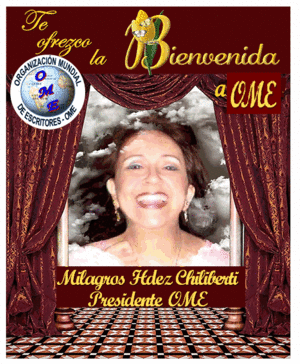- PORTADA
- PÁGINA PERSONAL
- MIEMBROS
- BLOGS
- FORO
- FOTOS
- VIDEOS
- GRUPOS
- LOSmásPOPULARES
- SONETOS
- JUEVES DE MUSA Y CANTO
- LITERATURA INFANTIL
- ERÓTICOS
- DUETOS Y MÁS
- CUMPLEAÑOS
- ARTES PLÁSTICAS
- ANTIPOEMAS
- CINE DE SIEMPRE
- POR LA PAZ
- ACRÓSTICOS Y CALIGRAMAS
- ANTOLOGÍA DE LA IMAGEN
- INTERCAMBIOS
- UNIVERSO HAIKU
- CARTAS DE AMOR
- FIESTA DEL AMOR
- LETRAS PARA MAMÁ
- LOS NIÑOS BENDITOS
- HOMENAJE AL POETA
- POESÍA A MADRE-TIERRA
- A LA MUJER
- POESÍA PARA TODOS
- TRADICIONES
- MITOS Y LEYENDAS
- CUENTOS NAVIDEÑOS
- CONCIENCIA SOCIAL
- TEATRO
- CIENCIA FICCIÓN
- EL PODER DE LA METÁFORA
- TANGOS Y MILONGAS
- MICROCUENTOS
- CHISTES Y CHIRIGOTAS
- ANTROPOLOGÍA-CIENCIA
- VENEZUELA
- EVENTOS
- BANCO DE IMÁGENES
- CHAT
- HAZ tu DONATIVO
Gene therapy articles pdf
GENE THERAPY ARTICLES PDF >> READ ONLINE GENE THERAPY ARTICLES PDF
Therefore, dual silencing of SHN3 and 447 SOST via a bone-targeted AAV may be a potent combination therapy for osteoporosis. 448 Our AAV-mediated gene therapy has demonstrated 1) high-efficiency transduction of 449 osteoblast-lineage cells, 2) in vivo targeting of single, multiple, and/or previously undruggable 450 intracellular non-enzymatic Home Science Vol. 256, No. 5058 Human Gene Therapy Special Issue Article Human Gene Therapy W. French Anderson Science 8 May 1992 Vol 256, Issue 5058 pp. 808 - 813 DOI: 10.1126/science.256.5058.808 Abstract References eLetters (0) Abstract Human gene therapy is a procedure that is being used in an attempt to treat genetic and other diseases. Main Text. The potential of cardiovascular gene therapy became evident in the late 1980s, when it was shown that direct intra-arterial gene transfer was possible with endovascular catheter techniques.1 At the same time, hyperlipidemias became a target for gene therapy,2 and conditions like in-stent restenosis, vein graft stenosis, heart failure, arrhythmias, refractory angina, and peripheral Gene therapy has been defined as 'nucleic-acid- based treatment, or transfer of DNA/RNA to so- matic target cells in the intention to treat serious illness' (1). In somatic gene therapy, new genes are introduced into body (somatic) cells. The therapy will only affect the treated person, and not future generations. Teacher Guide: The Bioethics of Gene Therapy Abstract: Students read accounts of recent gene therapy trials and consider the ethical implications in each and in continuing gene therapy trials as a whole. Using a bioethical decision-making model, students will state the ethical questions, list relevant facts, identify stakeholders, consider Advancements in human genomics over the last two decades have shown that cancer is mediated by somatic aberration in the host genome. This discovery has incited enthusiasm among cancer researchers; many now use therapeutic approaches in genetic manipulation to improve cancer regression and find a potential cure for the disease. Such gene therapy includes transferring genetic material into a In 1972, Theodore Friedmann and Richard Roblin proposed gene therapy in their paper published in Science, opening with "gene therapy may ameliorate some human genetic diseases in the future". Since then, almost half a century has passed and the field has been making slow but steady progress in turning their imagined future into reality. Read all about gene therapy including current medical research on switching therapeutic genes on and off, light-activated gene therapy and gene silencing. Your source for the latest research news. Home Science Vol. 260, No. 5110 The Basic Science of Gene Therapy Special Issue Article The Basic Science of Gene Therapy Richard C. Mulligan Science 14 May 1993 Vol 260, Issue 5110 pp. 926 - 932 DOI: 10.1126/science.8493530 0 0 Abstract References eLetters (0) Abstract Recombinant adeno-associated virus (rAAV) is the current vehicle of choice for in vivo treatment in the gene therapy field. rAAV is a safe and efficient tool for therapeutic gene delivery because of its lack of pathogenicity, inability to replicate autonomously, and capacity to transduce dividing and nondividing cells 1, 2, 3•. DEFINIDONS Human gene therapy is the deliberate transfer of genetic material into a patient's cells . with the purpose of curing or preventing a disease. Removal of existing genes from cells is not yet technically feasible in current clinical
Contenido principal
Grupos
Videos
-
22 de mayo de 2024
Agregado por Nilo 0 Comentarios 1 Me gusta
-
24 de mayo de 2024
Agregado por Nilo 0 Comentarios 1 Me gusta
© 2025 Creada por Aimee Granado Oreña-Creadora.
Con tecnología de
![]()
Insignias | Informar un problema | Política de privacidad | Términos de servicio

¡Tienes que ser miembro de ORGANIZACION MUNDIAL DE ESCRITORES. OME para agregar comentarios!
Únete a ORGANIZACION MUNDIAL DE ESCRITORES. OME